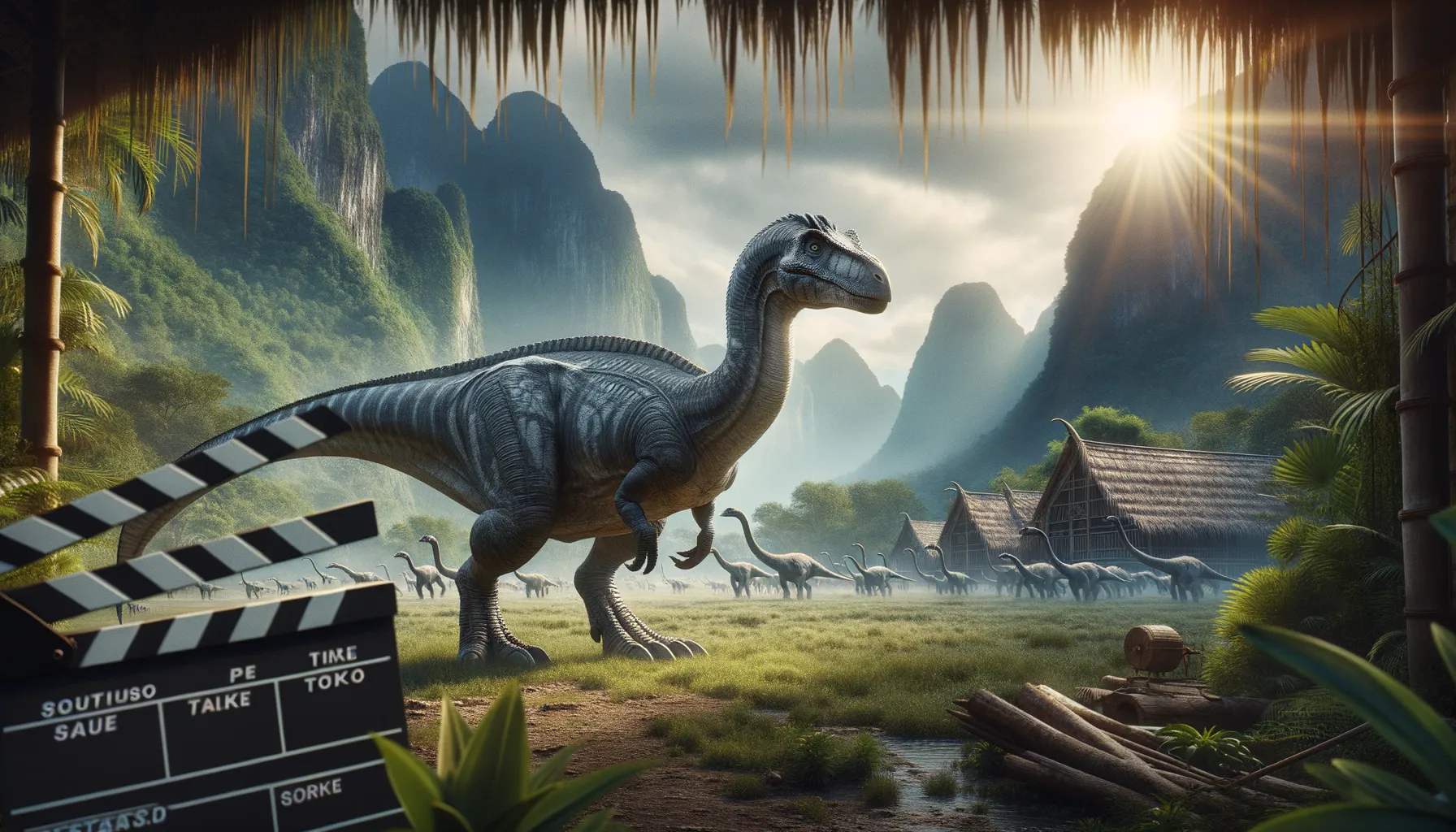
Shuangmiaosaurus
Duck-bill giant from ancient China
Period
Cretaceous
Length
About 9 meters long.
Height
Around 3 meters tall at the hip.
Weight
Approximately 1 to 2 tons.
Shuangmiaosaurus was a herbivorous dinosaur that lived during the Late Cretaceous period, primarily in what is now Asia. Its robust build and large size suggest it was well adapted to a life of grazing and digesting tough plant materials. The dinosaur is part of the Hadrosaur group, known for their duck-billed appearance and social herds.
Diet
It was herbivorous, feeding primarily on vegetation such as leaves and plants. Its flat teeth were ideal for grinding down fibrous plant material, allowing it to digest tough vegetation efficiently.
Hunting
Being a herbivore, Shuangmiaosaurus did not hunt other animals. Rather, it likely foraged leisurely, using its beak to pluck plants. It likely fed in groups, providing safety in numbers from predators.
Environmental challenges
Shuangmiaosaurus faced challenges such as changes in climate and vegetation during its time. Predators, including larger theropods, posed a continual threat, influencing their social and herd-based living. Seasonal changes affected the availability of water and food, driving migrations and dietary adaptations.
Speed
Likely slow due to its large size.
Lifespan
Estimated between 30 to 50 years.
First discovery
Discovered in China in 2003.
Fun Facts
- Shuangmiaosaurus was a dinosaur that lived during the early Cretaceous period, about 125 million years ago.
- It was discovered in what is now China, adding to the rich dinosaur fossil records found in Asia.
- Shuangmiaosaurus is believed to have been a herbivore, feasting on the lush vegetation of its time.
- This dinosaur is part of the hadrosauroids, which are known for being early relatives of the famous duck-billed dinosaurs.
- The name Shuangmiaosaurus means 'double temple lizard', derived from the location where its fossils were first unearthed.
- Shuangmiaosaurus adds valuable information to our understanding of dinosaur evolution, particularly in how herbivorous dinosaurs spread across different regions.
Growth and Development
Young Shuangmiaosaurus were likely vulnerable to predators and relied on the protection provided by the herd. As they grew, triggered by plentiful food resources, their size served as a deterrent against many threats. Growth rates were rapid in the initial years, slowing as they matured.
Habitat
It lived in forested floodplain environments, rich with diverse vegetation. This habitat provided ample food resources and watering areas, suitable for a large herd. During dry seasons, it possibly migrated to more verdant zones to sustain its dietary needs.
Interaction with other species
Shuangmiaosaurus was part of a complex ecosystem involving various herbivores and carnivores. It shared its habitat with other hadrosaurs and smaller herbivores, competing for similar food sources. Its presence attracted predators, and it relied on group living strategies for safety.
Natural lifespan
Typically lived up to 50 years under natural conditions.
Reproduction
Likely laid eggs in nests built from vegetation and soil, which were guarded by adults. Hatchlings were nurtured within a protective herd structure, gaining strength and learning key survival behaviors. Parental care in hadrosaurs is deemed probable, though exact behaviors remain speculative.
Social behaviour
Shuangmiaosaurus likely exhibited social behavior, traveling in herds for protection and social interaction. Herd life helped in communal defense against predators and enabled efficient foraging. Communication could have been achieved through vocalizations and displays of physical gestures.
Fossil locations
Fossils of Shuangmiaosaurus were first discovered in Liaoning Province, China. The discovery site provided critical insights into the herbivore's anatomy and lifestyle. These findings advanced our understanding of Asian hadrosaurids from the Cretaceous period.
